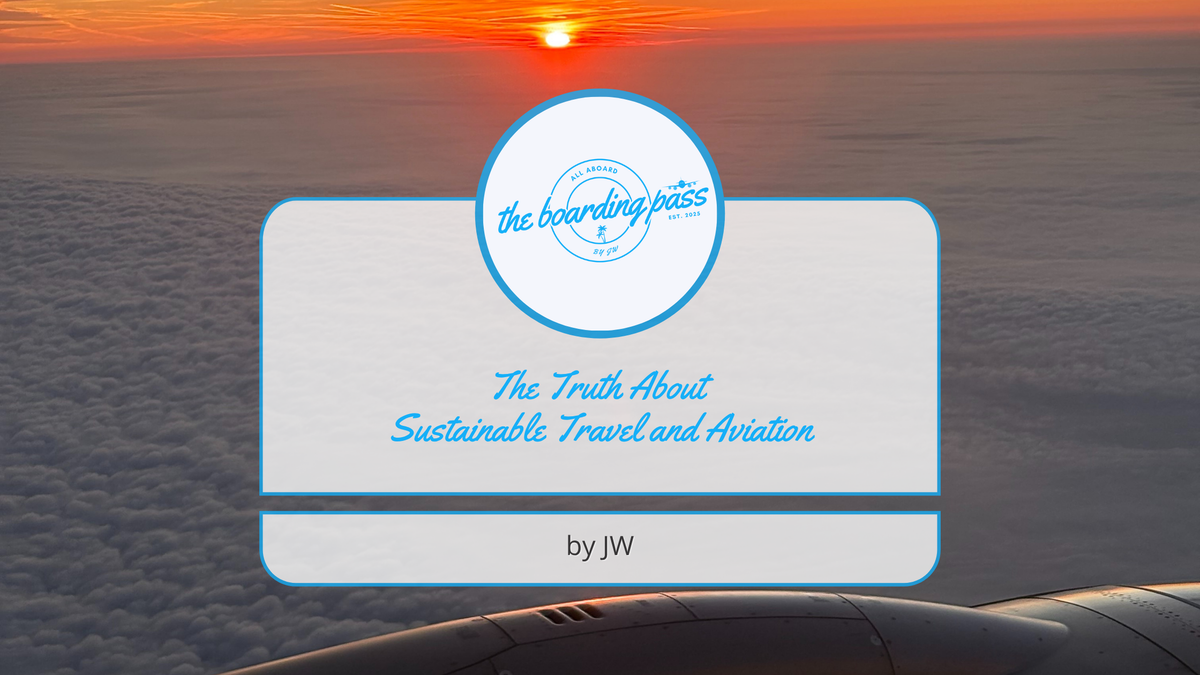How Modern Airliners, SAF, and Conscious Travellers Are Redefining the Future of Flight
I’ve just returned from Spain’s beautiful Costa Blanca, where the beaches were so pristine you could mistake them for untouched nature reserves. Not a plastic bottle in sight, just turquoise water, warm sand, and a quiet reminder that we travellers have a duty to keep it that way.
As someone who’s always been captivated by flight, the sound of jet engines, the magic of lift-off, the allure of faraway places. I’ve often wrestled with a simple question: can travel ever truly be sustainable?
Recently, while reading Concorde by Captain Mike Bannister, that question grew louder. During Concorde’s reign, the idea of Sustainable Aviation Fuel (SAF) didn’t even exist. Yet today, aviation is under more pressure than ever to clean up its act. This piece isn’t about guilt. It’s about balance, between the planet and the people.
Aviation Fuel Economy Concorde versus the Modern Jet
Let’s put things into perspective. Concorde’s Olympus 593 turbojet engines burned around 25,600 litres of fuel per hour, carrying roughly 100 passengers. That’s about 250 litres per passenger, per hour. A staggering number compared to a modern Boeing 777-300ER, which burns about 7,000 litres per hour while carrying up to 400 passengers. That’s less than 20 litres per passenger, per hour, roughly a 90% efficiency improvement.
So yes, Concorde was magnificent, but it was also an environmental nightmare. It cruised at 60,000 feet, where emissions had a greater atmospheric impact. Today’s aircraft are infinitely more fuel-efficient, built from lightweight composites and fine-tuned to shave off every possible drop of fuel.
But even then, aviation still accounts for around 2.5% of global CO₂ emissions, and that’s before you factor in non-CO₂ effects like contrails and nitrogen oxides.
So, What Is Sustainable Aviation Fuel?

Sustainable Aviation Fuel is the aviation industry’s great green hope. It's a next-generation jet fuel made from waste oils, non-food crops, or captured carbon combined with green hydrogen. It can cut lifecycle emissions by up to 80% compared to traditional kerosene, and the best part is that it can be used in existing aircraft with no engine modifications.
The SAF problem? Supply and cost.
Global SAF production currently meets less than 0.1% of aviation’s fuel demand, and it costs three to five times more than standard jet fuel. Airlines are desperate to scale it up, but it’ll take years before SAF becomes mainstream. Still, every litre counts, and early adopters like British Airways, Lufthansa, and KLM are already integrating small percentages of SAF into their regular flights.
The SAF Pioneer: Virgin Atlantic’s Leadership
When it comes to Sustainable Aviation Fuel (SAF), a few names stand out — and Virgin Atlantic leads the pack. Long before “net-zero” became an industry buzzword, Virgin was experimenting with biofuels and alternative energy sources.
2008: Virgin Atlantic conducted the first-ever biofuel test flight of a commercial airliner, flying a Boeing 747 from London Heathrow to Amsterdam with one engine partly powered by fuel made from babassu nuts and coconuts.
2018: The airline operated the world’s first passenger flight using a blend of SAF and traditional jet fuel.
November 2023: Virgin Atlantic made history with the first transatlantic flight powered by 100% SAF, flying from Heathrow to New York JFK. The flight used an innovative dual blend of 88% HEFA (Hydroprocessed Esters and Fatty Acids) from Air BP and 12% synthetic aromatic kerosene (SAK) from Virent. This was proof that SAF can perform as a direct replacement for fossil fuels.
Global SAF Momentum

The shift toward SAF isn’t limited to the UK. Across the globe, airlines are joining the race:
KLM became the first to operate a commercial passenger flight using SAF in 2011, flying from Amsterdam to Paris using biofuel made from used cooking oil.
Lufthansa soon followed, trialling daily flights between Frankfurt and Hamburg using biofuel made from jatropha, camelina plants, and animal fats.
In the US, United Airlines has invested more in SAF than any other carrier, aiming for 10% SAF by 2030, while Delta and American Airlines have committed to the same target.
IAG (which includes British Airways) plans to purchase one million tonnes of SAF annually by 2030.
Emirates even completed an A380 demonstration flight powered by 100% SAF in 2023.
Cargo carriers like DHL Express are also making major moves, agreeing to purchase over 800 million litres of SAFthrough partnerships with BP and Neste — one of the largest commitments in the sector.
Where the Industry Stands Today
The numbers tell the story.
2024: Global SAF production reached 1 million tonnes, representing just 0.3% of total jet fuel.
2025: Production is expected to more than double to 2.1 million tonnes (0.7%).
Europe leads with around 0.9% adoption, but Asia trails at just 0.02%.
Governments are now pushing mandates:
The UK requires 2% SAF by 2025, rising to 10% by 2030 and 22% by 2040.
The EU aims for 70% SAF by 2050, while the US has rolled out funding for SAF infrastructure under the FAA Reauthorization Act.
The message is clear. The race to decarbonise aviation is on, and SAF is the engine driving it. The challenge remains scaling production and cost, but momentum is building. Over 450,000 flights have already used SAF blends, and more airlines are committing to long-term supply agreements.
The next time you board a flight, remember: the journey toward sustainable aviation isn’t just about future technology, it’s already taking off.
Sustainable Travel Is About Balance
Here’s the thing. Travel itself isn’t the villain. It’s about balance and responsibility. We travel to escape, to experience new cultures, to reconnect with people and places. That’s deeply human and something worth protecting.
But sustainable travel means making conscious choices
Fly less often, but stay longer when you do.
Choose direct flights to reduce take-off and landing emissions.
Offset where possible, but focus more on supporting local economies and reducing waste.
Stay in hotels that walk the talk, not just wave the green flag.
Why Some “Eco” Hotels Aren’t That Eco
Many hotels now market themselves as “eco-friendly,” but dig beneath the bamboo straws and you’ll find plenty of greenwashing. Some rely on token gestures, reusing towels, LED bulbs, while ignoring major sustainability factors like energy efficiency, food waste, or water use.
A truly sustainable hotel will have certifications such as LEED, BREEAM In-Use, or EarthCheck, use renewable energy, source locally, and invest in staff wellbeing. It’s not just about optics; it’s about impact.
So Should You Feel Guilty for Flying?
Not necessarily. Guilt rarely drives change. Awareness does.
The aim isn’t to stop travelling; it’s to travel smarter. Aviation will never be zero-carbon, but innovation is moving fast. SAF, electric short-haul flights, and hydrogen propulsion are all part of the next chapter.
If Concorde symbolised the peak of speed, maybe sustainable travel will symbolise the peak of responsibility, where we balance the planet with the people, and the thrill of adventure with the care it deserves.
Subscribe to The Boarding Pass and never miss a post.

